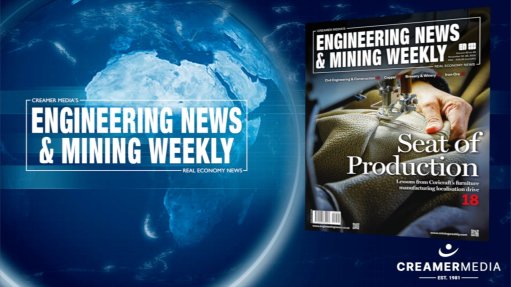Economic stimulus and recovery plan
South Africa’s recently unveiled stimulus and recovery plan has several broad parts: implementation of growth- enhancing economic reforms, reprioritisation of public spending to support job creation, the establishment of an infrastructure fund, addressing urgent and pressing matters in education and health, and investing in munici- pal social infrastructure to improve it.
President Cyril Ramaphosa said when he unveiled the plan: “We are confident that the . . . elements of our economic stimulus and recovery package will play a decisive role in reversing the recent contraction of the South African economy.” If you have not read the President’s speech, you should give serious thought to doing so.
Nothing is always quite as it seems. Think of it differently: ‘plot’ and ‘scheme’, according to the Merriam Webster dictionary, are synonyms for ‘plan’. This dictionary defines ‘plan’ as a method devised for making or doing something or achieving an end. What is the end? Could it be an end-game? To clarify, an end-game is the final stage of a game, when few pieces (chess) or cards (bridge) remain. Could the end be a new path of growth, employment and transformation? If so, is this a singular end, or an objective?
This made me wonder as to what a ‘means to an end’ is, or perceived to be? Could the answer lie in the statement that it is generally agreed that, in order for our economy to grow at a rate that will lead to job creation on a meaningful scale, we need to significantly increase levels of investment? Is it fair to deduce that the ‘means to an end’ is investment? I think it is. The President said: “We are decisively and rapidly accelerating the implementation of key economic reforms that will unlock greater investment in important growth sectors.” As to what type of investment . . . that is a column for another day.
What are the important growth sectors that are being targeted? There is tourism, which “continues to be a great job creator”, and then there is the mining industry, for which Cabinet has approved the revised Mining Charter, which “will revitalise the mining industry and provide certainty for investors, while charting a sustainable path towards a transformed and inclusive industry.” Further, there are the oil and gas industry, for which “separate legislation for regulation . . . will be drafted through government’s legislative process”, and the telecommunications sector, for which, “within the next few weeks, government will initiate the process for the allocation of high-demand radio spectrum to enable licensing; this will unlock significant value in the telecommunications sector, increase competition, promote investment and reduce data costs”.
The plan also includes nonindustry-specific measures, with the President saying: “To reduce the cost of doing business, to boost exports and to make South African industry more competitive, government has begun a review of various administered prices, starting with electricity, port and rail tariffs. Other measures we will implement include expanding procurement from small businesses and cooperatives, as well as using trade measures – within World Trade Organisation rules – to protect poultry and other sensitive sectors, and a vigorous crackdown on illegal imports.” He also mentioned agriculture, which, he said, “has massive potential for job creation in the immediate and long term”.
Are you surprised at the listed ‘important growth sectors’ or those that were left out? Just in case you missed something, “the central element of the economic stimulus and recovery plan is the reprioritisation of spending towards activities that have the greatest impact on economic growth, domestic demand and job creation, with a particular emphasis on township and rural economies, women and youth”.
All this can be summarised in three words, demand-side economics, a macroeconomic theory that contends that economic growth is achieved through increased demand for products and services. Although not acknowledged in the President’s speech, this implies a policy shift from the favoured supply-side economics, which contends that economic growth is achieved by lowering taxes and decreasing regulation.
Somehow, I do not expect this to be the last word on the ‘plan’.
Article Enquiry
Email Article
Save Article
Feedback
To advertise email advertising@creamermedia.co.za or click here
Comments
Press Office
Announcements
What's On
Subscribe to improve your user experience...
Option 1 (equivalent of R125 a month):
Receive a weekly copy of Creamer Media's Engineering News & Mining Weekly magazine
(print copy for those in South Africa and e-magazine for those outside of South Africa)
Receive daily email newsletters
Access to full search results
Access archive of magazine back copies
Access to Projects in Progress
Access to ONE Research Report of your choice in PDF format
Option 2 (equivalent of R375 a month):
All benefits from Option 1
PLUS
Access to Creamer Media's Research Channel Africa for ALL Research Reports, in PDF format, on various industrial and mining sectors
including Electricity; Water; Energy Transition; Hydrogen; Roads, Rail and Ports; Coal; Gold; Platinum; Battery Metals; etc.
Already a subscriber?
Forgotten your password?
Receive weekly copy of Creamer Media's Engineering News & Mining Weekly magazine (print copy for those in South Africa and e-magazine for those outside of South Africa)
➕
Recieve daily email newsletters
➕
Access to full search results
➕
Access archive of magazine back copies
➕
Access to Projects in Progress
➕
Access to ONE Research Report of your choice in PDF format
RESEARCH CHANNEL AFRICA
R4500 (equivalent of R375 a month)
SUBSCRIBEAll benefits from Option 1
➕
Access to Creamer Media's Research Channel Africa for ALL Research Reports on various industrial and mining sectors, in PDF format, including on:
Electricity
➕
Water
➕
Energy Transition
➕
Hydrogen
➕
Roads, Rail and Ports
➕
Coal
➕
Gold
➕
Platinum
➕
Battery Metals
➕
etc.
Receive all benefits from Option 1 or Option 2 delivered to numerous people at your company
➕
Multiple User names and Passwords for simultaneous log-ins
➕
Intranet integration access to all in your organisation


















